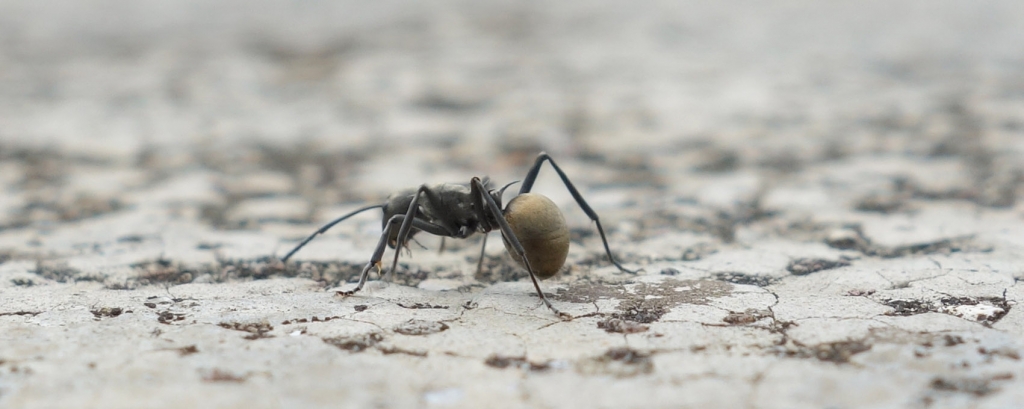
Benefits of Using Our Service
- Ant Baits to Replace Conventional Toxic Pesticides
Ants (Household Ants)
Ants belong to the insect order Hymenoptera and are close relatives of bees and wasps. They are familiar insects that are easily recognized, especially in their common wingless adult forms, known as workers.
However, winged forms of ants, which leave the nest in large numbers in warm weather to mate and establish new colonies, are often mistaken for winged termites, which also leave their nests to mate. Ants and termites can be distinguished by three main characteristics:
- The ant’s body is constricted, giving it the appearance of having a thin waist; the termite’s body is not constricted.
- The ant’s hind wings are smaller than its front wings; the termite’s front and hind wings are about the same size.
- Winged female and worker ants have elbowed antennae; the termite’s antennae are not elbowed.
Sanitation Practices
Ant management requires diligent efforts and the combined use of mechanical, cultural, sanitation, and often chemical methods of control. It is unrealistic and impractical to attempt to totally eliminate ants from an outdoor area. Focus your management efforts on excluding ants from buildings or valuable plants and eliminating their food and water sources.
Reducing outdoor sources of ants near buildings may reduce the likelihood of ants coming indoors. Become aware of the seasonal cycle of ants in your area and be prepared for annual invasions by caulking and baiting before the influx.
When ants invade your home, take immediate action i.e. caulk cracks and crevices around foundations, sponge invaders with soapy water as soon as you see them, plug up ant entryways with caulk or petroleum jelly.
Prevention
Prevention is always the best approach against all pests including ants.
- Clean up sugary spills.
- Eliminate food sources inside the building or prevent access to suitable food by keeping it in ant-proof containers.
- Caulk cracks and crevices around foundations that provide entry from outside.
- Provide a dry, vegetation-free border, such as gravel or stones, around the perimeter of house foundations to discourage nest building; wood chip mulches and landscape plants provide a good nesting environment.
- Remove trees that consistently host ants and are adjacent to houses . Trim branches and limbs of trees and shrubs that touch the building to keep ants from gaining access via these routes.
- Manage honeydew-producing insects such as aphids, whiteflies, psyllids, and soft scales on plants near the house. These honeydew producers often support large colonies of ants that subsequently invade homes.
Nest
They also construct nests under boards, stones, tree stumps or plants, and sometimes under buildings or other protected places.
Ants often enter buildings seeking food and water, warmth and shelter, or a refuge from dry, hot weather or flooded conditions. They may appear suddenly in buildings if other food sources become unavailable or weather conditions change.
In temperate climates the pharaoh ant nests indoors preferring warm, moist locations, often in wall voids, under flooring, or near hot water pipes or heating systems but is also found nesting outdoors in warmer parts.
Colony
After the eggs hatch, she feeds the white, legless larvae with her own metabolized wing muscles and fat bodies until they pupate.
Several weeks later, the pupae transform into sterile female adult workers, and the first workers dig their way out of the nest to collect food for themselves, for the queen (who continues to lay eggs), and for subsequent broods of larvae.
As numbers increase, new chambers and galleries are added to the nest. After a few years, the colony begins to produce winged male and female ants, which leave the nest to mate and form new colonies.
Common household and structural ants
Odorous House Ant – Tapinoma
Worker is 2.4 to 3.3mm long and has a one-segmented petiole. The body is a uniform brown to dark, and when crused, emit a rotten, coconut-like odor.
Bigheaded Ant – Pheidole
The workers are dimorphic (two size classes), ranging from 1.5 to 4.5mm. They have a two-segmented petiole and a pair of spines on the propodeum. The body color varies from dark brown through shades of red to light yellow.
Pharoah Ant – Monomorium pharaonis
Worker is about 2mm long, monomorphic and has a two-segmented petiole. Body color varies from yellowish or light brown to reddish with the tip of the gaster darkened.
Pavement Ant – Tetramorium caespitum
Worker is 2.5 to 3mm long and monomorphic (one size). It has a two-segmented petiole. Body color varies from light to dark brown to blackish.
Carpenter Ant – Camponotus
Worker is about 5 to 10mm long and polymorphic. It has one-segmented petiole in a form of a vertical scale. The thorax is evenly conves or rounded on the dorsal surface. The body color is dark or red.
Red Imported Fire Ants – Solenopsis invicta
Worker is 1.6 to 5mm long and polymorphic. It has two-segmented petiole and a stinger. The clypeus has three teeth. The body color is an almost uniform dark reddish-brown.
Johnson Group Ant Control Service
Spot Treatment
Baits
Granule is highly attractive to imported and native fire ants, and other ants. Worker ants carry it into the mound as food for the colony. They eat it and feed it to the queen.

